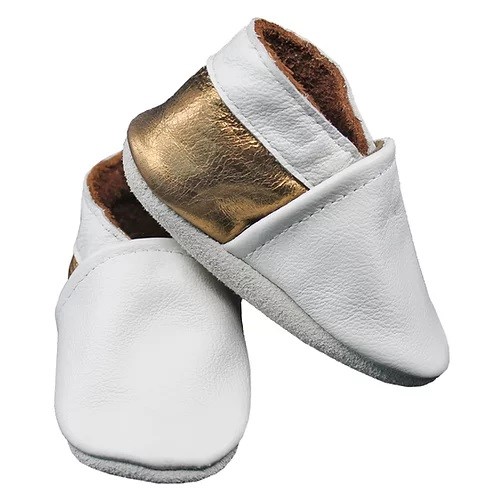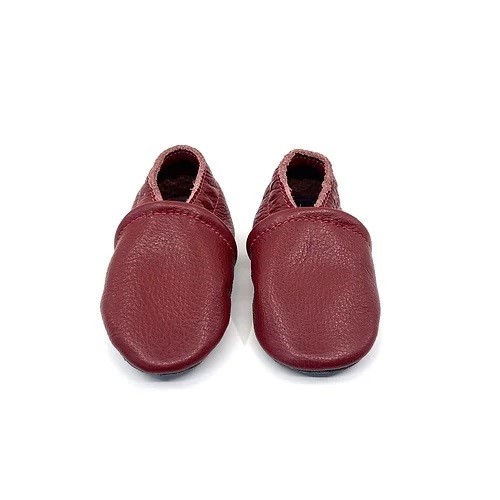There is a growing awareness among parents about the future health benefits of cord blood and tissue banking. If you have a family history of genetically inheritable diseases, you must consider this option after the birth of your baby. By saving your newborn baby’s cord blood and tissue for future use in a private bank, you can ensure that he or she can receive treatment for serious medical conditions through transplantation or cell therapy. You can even find affordable cord blood banks at $19.99/month
What is cord blood tissue?
Cord blood tissue is the tissue found in the umbilical cord tissue of newborn babies. It contains regenerative stem cells such as mesenchymal stem cells (MSCs), perivascular stem cells, and endothelial stem cells. Collecting the cord blood tissue from the umbilical cord and then isolating the stem cells is easier, non-invasive, and painless than extracting them from the bone marrow. Moreover, you can preserve the tissue indefinitely through cord blood and tissue banking.
What is cord blood tissue banking?
Cord blood tissue banking is the method of processing and storing cord blood using cryogenic preservation methods. After parents decide to bank their baby’s cord blood tissue, they can contact a reputable cord blood bank with accreditation by the FDA and other regulatory agencies several weeks before their baby’s birth. The cord blood bank will provide a blood collection kit that the doctor or nurse can use to extract the cord blood tissue from the newborn’s umbilical cord.
A medical courier will convey the extracted samples to the storage bank, and there they will undergo screening for infectious disease and bacterial contamination and analysis for stem cell content. That can ensure that a higher count of quality cells can remain viable for use in different medical therapies. Then, within 24 hours, they will be prepared for storage with liquid nitrogen cryopreservation methods. The cord tissue blood bank will send you a report of the stem cell count and viability along with a unique identifying number for your stored sample for easy retrieval later.
Cord blood tissue banks are high-tech facilities that use the latest technologies like AXP II Processing, BioArchive Smart Robotics Tank, MCASS Processing, Segmented Tissue Storage, and MVE Tank. With these, the banks can safely and conveniently process, store, and access their cord blood tissue inventory. The banks can scale up to accommodate evolving technologies. They must have a continuous power supply to ensure the safe storage of the cord blood tissue samples.
There may be a monthly, annual, 20-year, or lifetime storage charge for cord blood and tissue banking. It can be expensive to store cord blood tissue for a long time, but it may be worth it due to its health therapy potential. You can choose to keep the tissue in a private bank exclusively for your baby and your family, which will be more expensive than storing it in a public bank. However, in a public bank, anyone can access the stored sample. Your family will not have sole access.
What are the benefits of cord blood tissue for your children?
Your children can benefit from cord blood and tissue banking in the following ways:
Useful for health therapies
The research is still ongoing on using cord blood tissue for medical therapies. However, the ability of the stem cells in the cord blood tissue to differentiate and replicate is promising. Along with duplicating themselves, these stem cells can differentiate into tissue and organs. They can develop into muscle, cartilage, bones, nerves, heart, brain, intestines, and liver. Researchers are currently seeking ways to develop viable tissue and organs that they can use in transplantation therapies.
No rejection issues
Since the stem cells from the cord blood tissue are from the baby’s body, there will be no rejection-related issues with using them in therapies in the future. There will be no need to wait for a matching donor to carry out the medical procedures.
Cord blood tissue storage
Once the cord blood tissue is in the bank, you can preserve it forever. Your children can avail of the stored cord blood tissue as and when necessary. They can contact the cord blood tissue bank, and the technicians will unfreeze the sample and deliver it to the hospital for cell therapy.

Every stage of infants’ growth is vital. Parents need to monitor the development of their babies if they are matching with the preset milestones. Infants learning to walk is one such milestone that parents need to watch. The age when children learn to walk differs with every child. It can be anywhere around 10-16 months.
At this juncture, it is essential to know what kind of footwear to choose for babies during their early stage of learning to walk. It is a common situation that many doubts occur to parents at this instant. Not surprisingly, parents would do enough research about walkers shoes for babies to clarify their related doubts.
Why does my baby need shoes?
Babies’ feet are flat, unlike adults. It takes around 6 years for babies to develop curves in their feet and get to their final shape. It is why footwear plays a crucial role in supporting the growth of their foot and shaping them.
Tight shoes might hamper the growth of your baby’s foot. They can also trigger conditions like ingrown nails and rough soles.
Choosing shoes that fit well will turn walking into a comfortable experience for your babies. Good shoes will provide enough support and grip to their feet, thus minimizing the risk of falling and injuries.
It is vital to introduce shoes at the right age. However, shoes do not help in making the baby learn to walk faster. The age of walking varies from infant to infant and generally falls in the range of 10-16 months.
Leaving your baby barefoot will allow their muscles to strengthen. It renders the adequate exposure their toes need to acquire shape and strength. Hence, as much as possible, let your baby crawl and try to walk barefoot.
However, if you live in cool places and wish to provide warmth to your baby, socks and booties will help.
Walkers shoes for babies
Walker shoes for babies are one of the top choices to introduce them to footwear. They are designed specially to impart comfort and grip to the children that are learning to walk by taking the support.
The difference between walker shoes and other shoes is their focus on offering comfort to the child. The sole of the walker shoes is both flexible and sturdy enough to encourage them to walk.
Here are some pointers to keep in mind while choosing the best walkers shoes for babies:
• Opt for shoes with a rounded toe design. They allow free movement of your toddler’s toes and do not hurt them.
• While measuring the foot size of the toddler, note down the length and width of the foot. If the length of the shoe fits but not the width or vice versa, the shoe won’t be of any use.
• Inspect the soles of the walker shoes. They should allow ample space for the baby to move their toes freely when they wear the shoes.
• The sole should also be flexible and bend along with the baby’s foot.
• Choose walker shoes from brands that specifically cater to the needs of toddlers. Shoe brands meant for adults might not always help when it comes to kids.
• Invest in good quality walker shoes from brands that adhere to Pediatric association recommendations. Shoes from brads pass all tests and assure quality and comfort for your baby.
• Shoes for toddlers must be easily washable. Kids take no time to dirty their shoes by playing in puddles and soil. Hence, read the manufacturer’s guide to know how to clean the shoes, so you prolong their life as well as provide hygiene to your baby.
• Kids can also spoil shoes with urine, poo, and food. Dark color shoes can be a little easier to clean and might make your life easy dealing with your naughty kids.
Summing Up
Walker shoes can allow the best grip on your baby while walking. They make a great choice to accustom children to walk. Make sure to pick those that offer comfort and grip to your baby. The shoes must also be washable and moderately priced. Measuring the foot size and going through reviews also help in choosing the best shoe for your toddler.

A pair of clean clothes and matching shoes are essential to make kids look adorable. Kids love jumping and playing – be it on cots or in the muddles. The latter can invite added tasks to mom such as cleaning shoes loaded with dirt.
Many moms worry about cleaning their kids’ shoes. After all, kids’ shoes are expensive and demand effort to clean and maintain them. However, with some knowledge on cleaning children’s shoes, moms can stay assured that their task is less stressful than expected.
In this post, let us talk about methods to clean kids’ shoes with special attention on shoes for newborns.
How to clean kids’ shoes?
Kids’ shoes can attract tons of dirt at the end of the day. The task becomes heavier if the children are of school-going age and play in the playgrounds and open muddles. The method of cleaning shoes varies with the type of shoe material.
Canvas shoes:
It is easy to clean canvas shoes as they are made of breathable materials like cotton. Soak canvas shoes in water if the mud is too high. Change the water based on necessity. After some time, take out the shoes from water, use an old toothbrush or cloth brush and remove the mud by gently brushing the shoe.
You could also put canvas shoes in water, provided they are not of leather or mesh. Remember to put shoes in a pillow cover or lingerie bag before you throw them in the washing machine.
Baking powder is the safest bet to clean canvas shoe soles. You could use this technique to clean shoes for newborns too. Just a half spoon or less would suffice to clean kids’ shoes if you are concerned about using baking powder for cleaning.
Sprinkle baking powder on the soles, let it sit overnight. The next day, dust off the powder thoroughly from shoes and let them air dry. They are as fresh as new and ready for your kids’ use.
Indoor shoes:
Indoor shoes do not attract much dirt and are grim. Especially, kids, do not need much regular cleaning unless they spoil them with food, urine, and poo.
Soak the shoes in warm water, and gently hand wash them with mild, child-safe detergent. Remove water thoroughly by using a towel and let them dry fully in the natural air and shade.
If the shoes contain decorations or fur, avoid putting them in the washing machine. Always hand washes kids’ shoes to increase their lifetime.
Leather shoes:
Regular maintenance of leather shoes enhances their span. Apply little coconut oil or Vaseline on the shoe using an old cloth or sponge. Keep them aside and let them air dry.
Never clean leather shoes with water or in the washing machine. They must always stay away from water and should be thoroughly dry. Use dry brushing to remove the mud and grim, and clean with a cloth applied with beeswax or Vaseline as mentioned above.
More methods to clean kids’ shoes
If you want to refrain from using chemical-based cleaners for kids shoes or know how to remove stubborn stains from kids’ shoes, try these techniques:
Magic erasers: Rub magic erasers on the stains on kids’ shoes. They are a trusted solution to clean hard stains by moms and should come in handy to you too.
Toothpaste: Using toothpaste is one of the gentlest methods to clean kids’ shoes. Apply toothpaste with an old toothbrush all over the shoe and the sole. Let it remain for some time and clean the shoe with plain water using the toothbrush. Dry them in the shade, and they are ready for your naughty one’s use.
Washing machine: If the shoes are too dirty to clean with hands, soak them in the detergent for a while. Then clean them in the washing machine on a gentle cycle. Refrain from using a washing machine dryer. They could shrink the shoe and make it lose its shape. Instead, dry in the natural air in the shade to retain their shape and color.
Conclusion
The task of cleaning kids’ shoes is a hassle for moms but not too difficult. Handwashing is the best method to clean kids’ shoes while gentle machine wash also helps in certain cases. With regular maintenance and cleaning, you can easily prolong the health of shoes besides ensuring their hygiene.

Watching the kids making their first steps wearing the infant shoes is like a dream come true for parents. Shoes for infants are the essentials that parent purchase while designing their nursery. Those little steps in the cute shoes with kids trying to learn walking by taking support is a sight anyone can fall in love with.
At this juncture, many parents are confused about introducing baby shoes to infants. Various questions arise in their mind, and they wish someone would solve their doubts.
As we move ahead in this article, we will talk about everything parents ever wished to know about shoes for infants.
Age
“At what age should I start putting on shoes to my kid?”
This is one of the most asked questions from parents. To be specific, there is no exact answer to this. Babies start walking around 12 – 15 months. Child growth can vary from baby to baby, and so does their age of walking.
Walking and crawling barefoot helps to strengthen the muscles and joints of kids. Thus, till your baby starts walking on its own, it may not be suggested to put on shoes. Instead, you can use booties and cotton socks to keep your foot warm.
Benefits
Kids’ shoes protect the baby’s little feet from injuries. They keep their feet warm and protect from the cold atmosphere outside.
Good quality kids’ shoes offer anti-slip protection and prevent babies from falling. They offer extra comfort to the little feet, thus making your baby’s walking experience a happier one.
Besides offering protection, kids’ shoes add a dose of swag to the little ones, thus stepping up their style quotient.
Selection
Some of the factors to keep in mind while choosing shoes for infants are as below:
Price:
Kids grow fast. Shoes are the first ones that turn tight to your baby even before you notice them. Thus, while purchasing shoes, it might not be suggested to pick too pricy ones as they soon become outsized.
Cheaper shoes might not offer the support and experience your baby deserves. They may develop wear and tear and may even increase the risk of slipping.
Hence, invest in good-quality shoes for infants that promise both comfort and safety at moderate pricing.
Fit:
While this is a no-brainer, shoes for infants need to be the perfect fit for their little feet. While a loose fit might make your baby slip, too tight a fit might trouble their delicate skin.
Hence, while choosing the shoes, measure the baby’s feet with tape to pick the correct size. Alternatively, you could also check the measurement table the manufacturer provides.
In many cases, testimonials and reviews also provide an idea about the fitting of the shoe. Checking such reviews before you finally make your pick would save your time and effort.
If you get a chance to buy shoes in person, never miss the opportunity to put on the shoes for your baby and try them before you buy them.
Features
The shoes must-have features that add comfort to your baby:
Sole: The sole must be soft, breathable, and provide warmth to your baby’s foot. It must not occupy too much inner space and make the shoe tight. Cotton soles are breathable and offer more comfort to your baby than synthetic ones.
Closure: There are many types of closures available in shoes for infants: buckle, button, lace, pullovers, etc. While lace ones offer extra space as your baby’s feet grow, pullovers offer ease of wearing. A thing to remember is, kids soon outgrow their shoe size and hence choose shoes that fit even as your baby grows.
Know what to avoid
Shoes for your baby must be soft and comfy. Avoid choosing crocs and flip-flops right at the introduction level. They tend to be slippery and hence do not suit babies that are learning to walk.
Conclusion
Kids’ shoes come in various attractive options and features. Choose the ones that best fit your baby and offer them complete comfort and safety. If you are a parent that loves experimenting, explore the various colors and designs available and turn your little one into a fashionista!

Children have different requirements when it comes to their dental health. Their oral cavities are still developing and they may need to see a dentist more often than usual.
About Pediatric Dentistry
Pediatric dentistry is a branch of dentistry that primarily deals in treating kids and teenagers. Pediatric dentists complete their dental school training after receiving their bachelor’s degree. Dentists may choose pediatric dentistry as their specialization during their residency. After completing their residency, they also sit for their board certification examinations.
You can find a good pediatric dentist via location-based online searches. Simply input your location with your requirement such as pediatric dentist McLean to find a list of websites. You can check the dentists’ websites to find more about their training and practice. Choose one that suits your requirements.
Reasons your Kid Needs to See a Pediatric Dentist
Specialized Training
Pediatric dentists receive special training to treat and care for children’s teeth and gums. They learn how to treat common oral problems in children such as cavities, tooth decay, uneven growth, delayed growth, etc. Kids start to grow baby teeth when they are only months older. Around 6-7 years of age, baby teeth begin to fall and permanent teeth start to appear. This stage is quite critical. If proper care is not taken, the growth of permanent teeth can be problematic.
If you start taking your child to a pediatric dentist from the very start, you can minimize a lot of dental problems during their growing years.
Specific Setup
Pediatric dentists ensure that their clinical setup is kid-friendly. Even most adults are not comfortable with dental exams. So, imagine a child going to a dentist! But pediatric dentists are trained to work with children of all age groups. They ensure that their clinical décor and setup are designed in a way to comfort a child.
They also have the necessary equipment suitable for a child’s oral cavity. Small-sized dental equipment may be more comfortable and less scary for children.
Unique Problems
Kids may have problems related to oral care that adults generally do not face. One common example is oral problems that arise due to thumb-sucking. Kids, especially toddlers, may take to sucking their thumb or fingers. This can interfere with their oral health. It can ruin the normal alignment of their teeth. The same applies with the use of pacifiers.
Your pediatric dentist may recommend that your child stops using a pacifier by age 3. If not, the habit may interfere with teeth alignment. Thumb-sucking or pacifiers can make the upper teeth crooked and bend forward. Your child may develop problems with chewing or speech.
A pediatric dentist can help your kid break these unhealthy habits. Kids may listen to a specialist as experts can explain things to them in a better way. The dentist may also provide you with tips to use at home to break these habits gently and effectively.
Emergency Treatments
Not all dentists offer emergency services. But a pediatric dentist is more likely to do so. kids are prone to injuries. They can chip or break a tooth during games or accidents.
Delay in the treatment of younger kids can lead to problems with the growth of permanent teeth. Older kids may lose their permanent tooth due to delayed treatment. Blood loss is also an issue with oral injuries. Infection can cause sudden and severe tooth pain. Infections and severe ache require immediate attention to prevent tooth loss and protect your child from pain.
During emergencies, your pediatric dentist will be there to take care of your kid’s oral injuries and problems.
Preventive Care
Preventive care is the key to good oral health. Good oral care that begins from an early age can protect teeth and gums for life. When you start taking your kid to a pediatric dentist, he or she may experience fewer dental problems later.
Kids also tend to develop healthy oral habits if they visit their dentist regularly. They will also learn the right way to brush and floss from a young age. They will also know the risks associated with sugary foods.
Visits to a pediatric dentist can be a boon for your child’s oral health.













